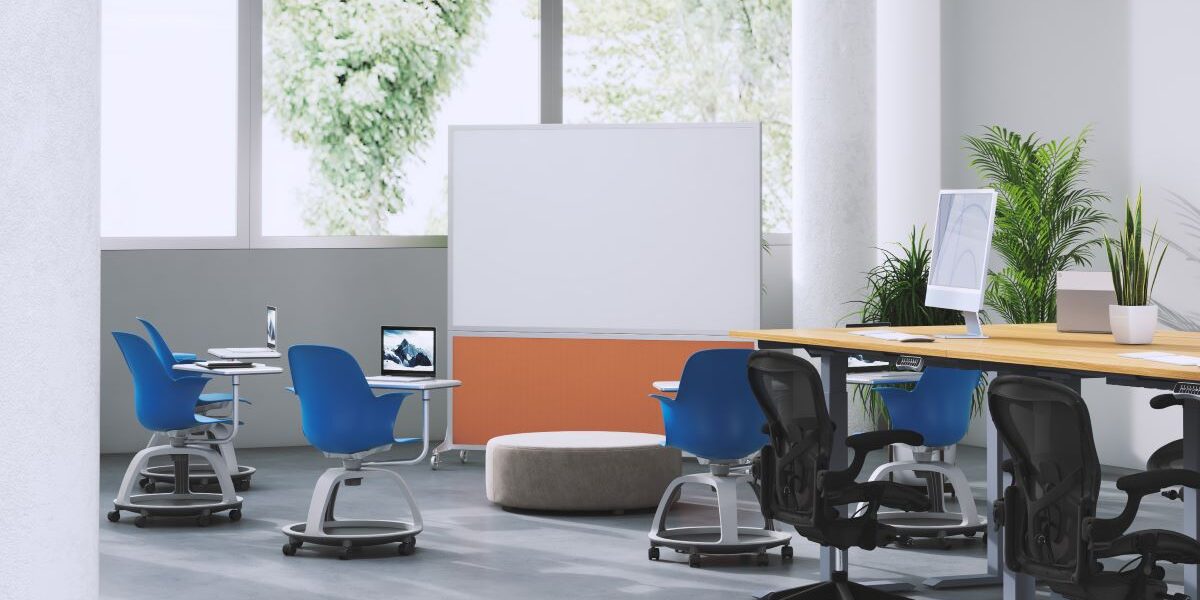School is back in session! As students, parents, teachers and administrators transition, everyone is just beginning to understand what the new year will bring. Now that the final numbers for each class are clearer, it’s time to assess your classroom needs.
Everyone is adjusting to the new school year, including teachers, staff and administrators. That means considering what will make your classroom run effectively and get your learners in sync with a new rhythm.
With final enrollment numbers and a better understanding of individual classrooms’ makeup, it’s time to step back and think of ways to adapt your space, manage your students, and foster a great learning atmosphere.
Whether your class size is smaller, what you expected or larger than anticipated, you may need to roll out a few new strategies to help as you learn more about your students and their needs.
Build Routine and Structure
Setting expectations and establishing routines is one of the best ways to help keep a class functioning smoothly.
Consistency and an organized classroom space help students understand procedures, what to do when, and find what they need quickly and easily.
For example, if language arts blocks are after lunch on Wednesdays, organize workstations and books in a specific location. Dismiss numbered small groups one by one to move to stations for writing assignments while specific grammar lessons are reviewed with the rest of the class.
Work on Classroom Layout
Smart use of space in a class of any size can support better classroom management. Position your students in a way that will promote participation and keep everyone involved.
That may require more flexibility with your space, which includes areas for social interaction, group work, as well as quiet study. Room dividers, portable whiteboards and even reconfigurable cubicles let you create areas for specific kinds of learning and boost engagement.
Leverage Small Groups and Flexible Grouping
Harness the power of teamwork by breaking students into small groups whenever you can.
Students benefit from small group interaction, allowing teachers to rotate among them asking questions and giving valuable one-on-one time, especially to students who need it most.
You can change up how you form groups – by learning style, interests, skills, student choice (with guidance) or topic knowledge. Rotate groups to create balance as you get to know your students better.
Divide Your Class in Half
If your class size is very large, splitting your class into two sections each day might be a unique technique to engage with students more effectively.
Half of students might work independently on an online activity or individual work, while the other half works on a new lesson with the teacher who can field questions and work with students individually. The following day, the groups switch.
Portable or wall-mounted room dividers can help you create this kind of activity distinction.
Increase Student Responsibility
Get your students involved in managing the classroom and share the workload. You can assign students jobs passing out papers, reconfiguring work areas and seating, collecting homework and putting books or creative supplies away.
Do this on a rotating basis or break the classroom into teams with different responsibilities.
Create a Strong Class Culture
Involve students and give them ownership in making an enjoyable and productive classroom.
Ask for their suggestions about what would help them do their best and foster an attitude that everyone can make a difference in creating a positive environment.
Acknowledge and reward students for positive behavior and on-task work with a point system or a special classroom activity.
This information is courtesy of Versare, an international provider of solutions that create flexible space anywhere, www.versare.com. Modular, temporary and semi-permanent walls, floors, rooms, sound-absorbing ceiling panels—they are determined to provide anything and everything customers need to get the maximum results from the spaces they use every day.













